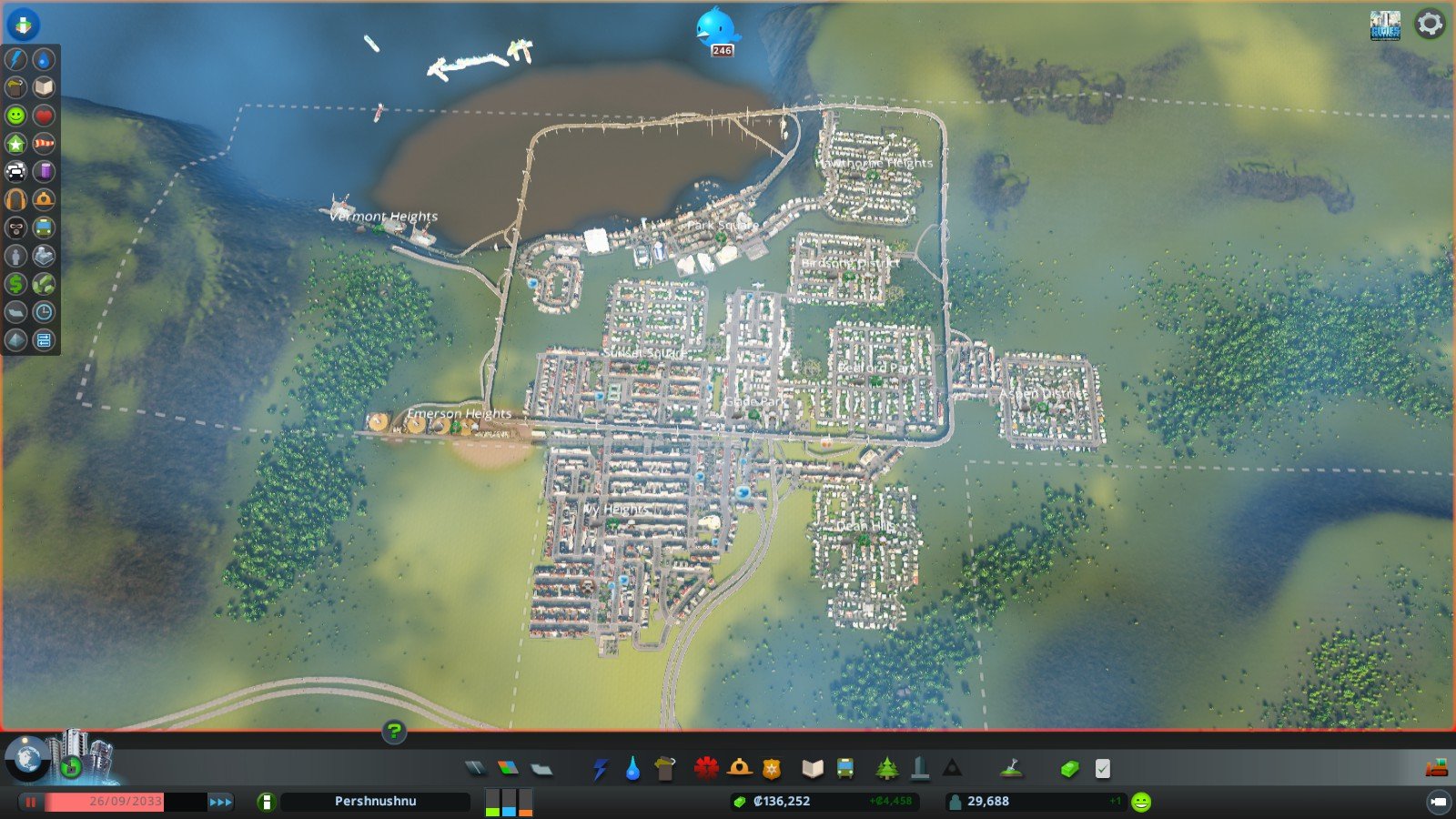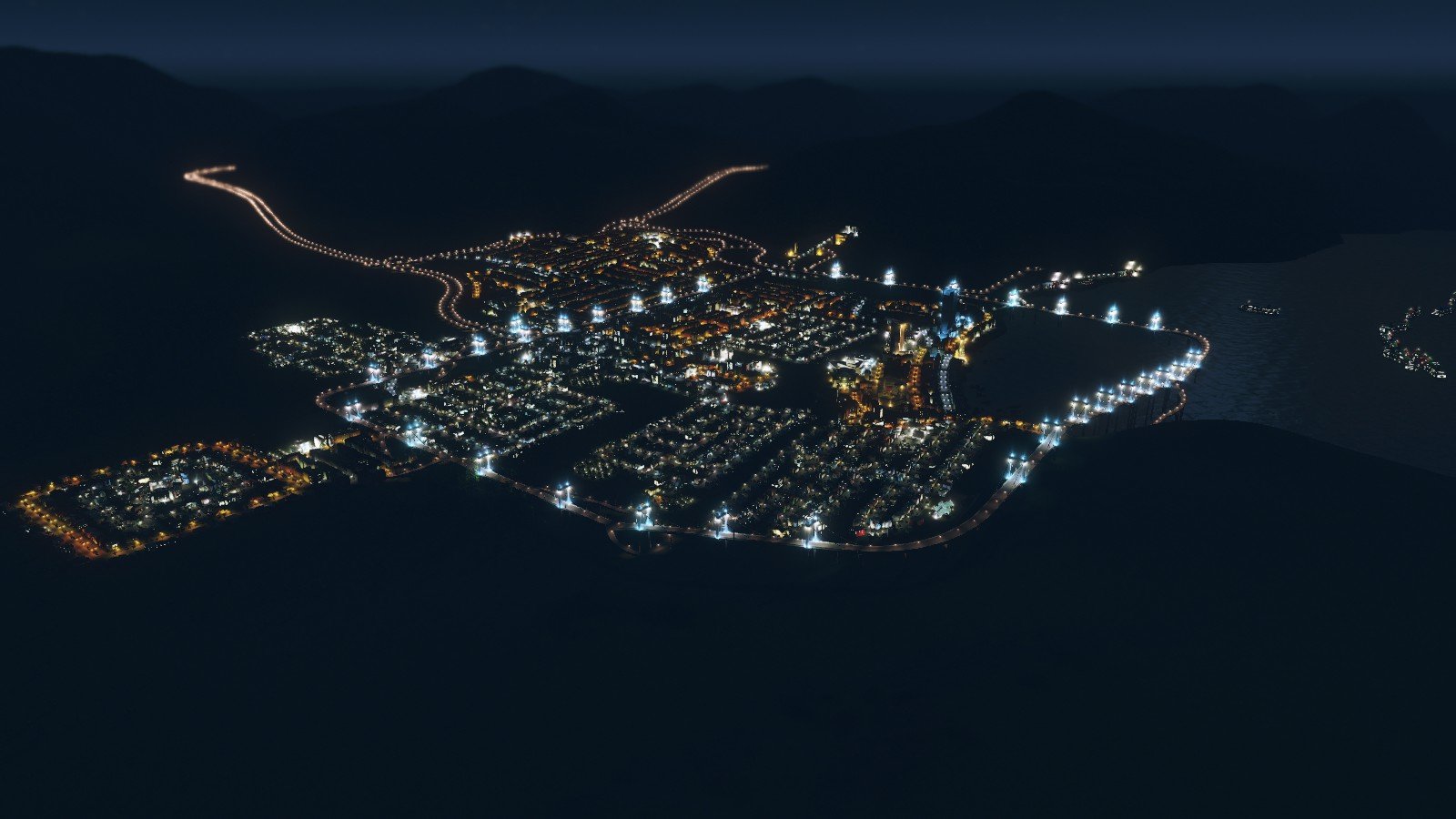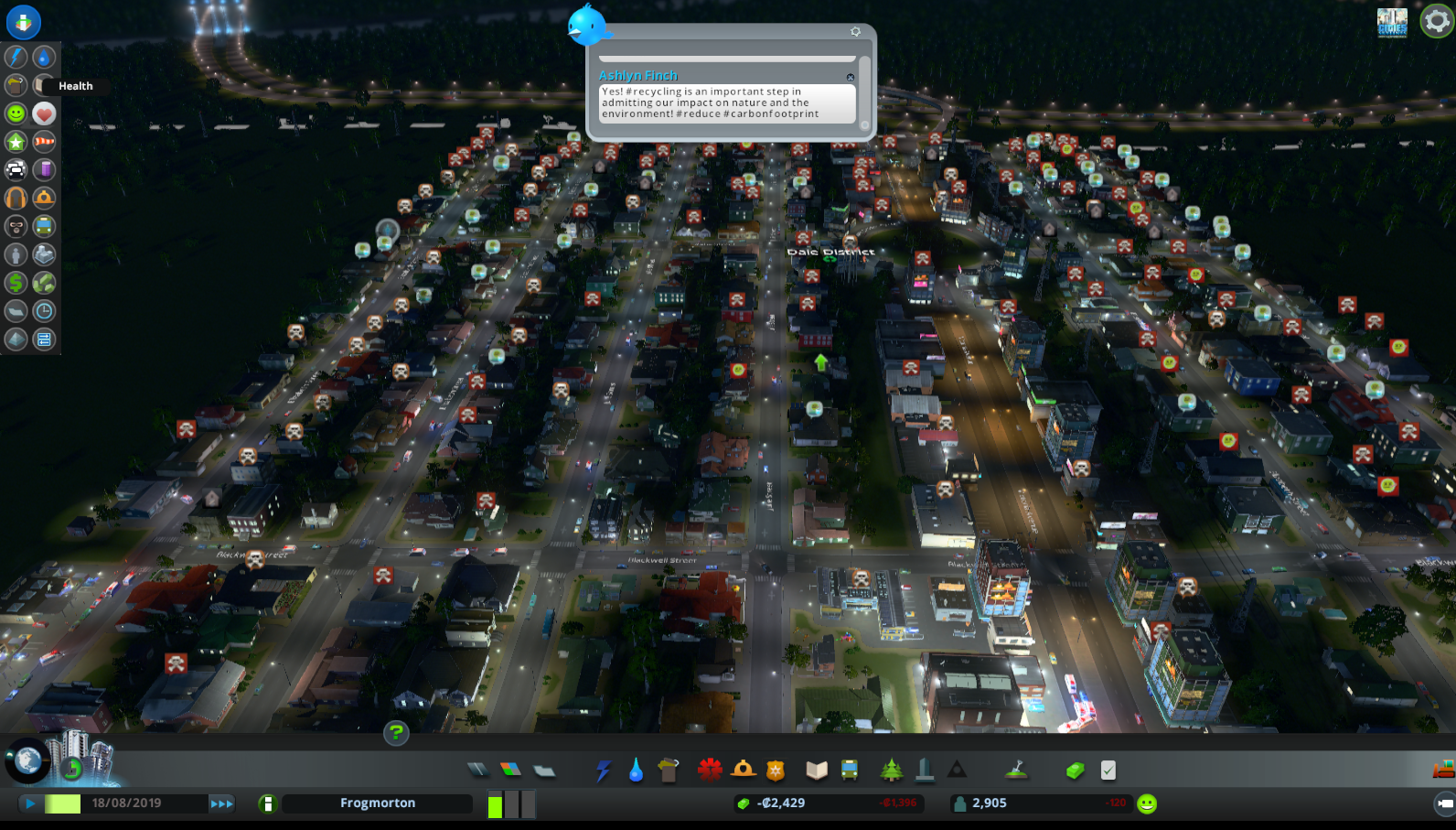Cities: Skylines review
After the failure of SimCity and the (seemingly) subsequent collapse of management sim games, people gradually moved on from that PC gaming staple. But along came Paradox Interactive’s new game, Cities: Skylines, an ambitious effort to reinstate city sims as a pillar of the industry. For the most part, the developer succeeded.
At their core, city-management sims allow players to take a blank canvas, draw up roads and power lines, and then begin building a city. Cities: Skylines hands players a starting region of two square kilometers (and gradually gives opportunities for expansion) before cutting them loose. Each of these maps combine different natural resources and architectural styles, and players can even start a new game via a particular scenario or challenge.
Cities is a pretty game, from the environmental vistas to the buildings and roads to the music. There’s a kind of catharsis that infuses the game, inviting players to lose themselves (and many, many hours) into planning, building, and managing a small city as it develops into a sprawling metropolis. It’s also the kind of game that’s great for collaborative building; as of this review, my wife and I have played around 50 hours together, and I doubt we’ll stop any time soon.
View from the top
Even within an established genre, Cities makes a concerted effort to tower above the competition. The game’s UI is clean and straightforward at a glance, but layers of complexity can be sought out and incorporated. Prioritizing highways, replacing stoplights with stop signs, and tracking property value are all behind-the-scenes features for the most invested players — we spent perhaps 40 hours with the game before even discovering them, and then began to use them in future games.
In fact, that might be the greatest testament to the game’s success. Cities: Skylines allows players to learn and develop a unique style while also managing cities. Paradox Interactive designed a system that let me go at my own pace, building personal strategies and preferences that led to increasingly successful and attractive cities.
Creative freedom is at the heart of Cities, and it takes the form of micromanagement. I could choose to scale the taxes, or offer tax breaks to encourage certain industries. I could assign districts to cultivate specific communities across the city, then incentivize local storeowners and homeowners by offering certain policies (recycling, water conservation, high-tech housing, etc.)
Paradox Interactive prioritized interacting with their game’s community, and it shows. The game’s home screen links directly to top-voted mods, which highlights the passionate and active group of modders who have flocked around this new city sim. Whether you want to replicate a real-world city, incorporate actual (or futuristic) structures, or fine-tune mechanics and features, Paradox has opened the floodgate for its players, and it’s a testament to the value of a happy playerbase.
Flotsam and jetsam
As with every game, Cities: Skylines isn’t without its faults. The only unwelcome part of the UI is “Chirper,” a Twitter-clone that features posts from inhabitants of the city. Conceptually, it’s a cool way of letting a player interact with their creation, but after a few hours the updates become repetitive, irrelevant, and downright annoying.
The game also features a heavy focus on managing traffic and dealing with transportation mini-crises. Now, Paradox created the successful Cities in Motion games (which, as you can probably guess, are transportation-specific sims), so the studio has a predilection for these systems. While I didn’t mind finding creative solutions like elevated super highways and intricate tunnel systems, I still struggled with the game’s overreliance on overseeing highways and merchandise shipping.
I saw several weird construction issues during my sessions, from building abandonment en masse to power lines failing to activate nearby buildings. One of my cities completely fell apart in light of the Great Plague of 2017, where a sewage mishap poisoned the water systems. Of my 4,000 citizens, nearly 600 came down with some type of disease…and that was after more than 2,000 died outright. Removing and rerunning all of the plumbing and water lines failed to fix the issue, and I watched a promising town spiral into an apocalyptic poo-swamp. Even now, I still don’t know why I couldn’t fix the issue in time.
(And as an added warning, my only attempt to seriously reshape terrain resulted in a tidal wave-esque flash flood that wiped out an entire city district. My civil engineering skills need some serious work.)
In a nutshell
Paradox Interactive boasts a long history of successful strategy and roleplaying games, and they threw all of that micromanagement know-how into the development of Cities: Skylines. The game is peaceful, beautiful, and incredibly addictive, winning over a community of talented modders and passionate players. The game’s success marks a full resurgence of management sims, and I’m excited to see how Cities will continue to expand and develop.
If you loved games like Roller Coaster Tycoon and SimCity, or enjoy management puzzlers like Mini Metro, you owe it to yourself to try Cities: Skylines.
Pros
+ Streamlined UI
+ Sharp visuals
+ Endless replayability
+ Compelling troubleshooting
Cons
- Ambiguous obstacles
- Transportation overemphasis
- (Un)Natural disasters





